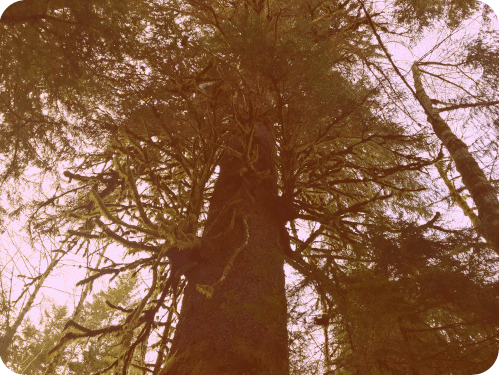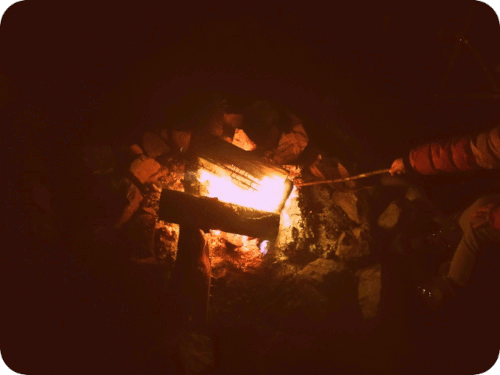
Bill Jones (Pacheedaht elder): 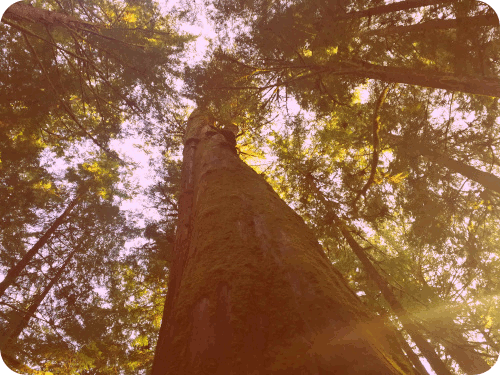
Vancouver Island’s ancient temperate rainforests have been
disappearing at an alarming rate. 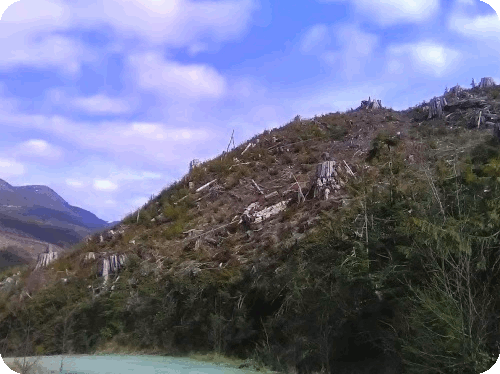
Growing up in BC, I’ve watched the forests around me get
razed into waste dumps for my entire life. It’s pretty
clear to anyone that drives into the backcountry, that
forestry planning has not allowed new growth to catch up
with timber demands. 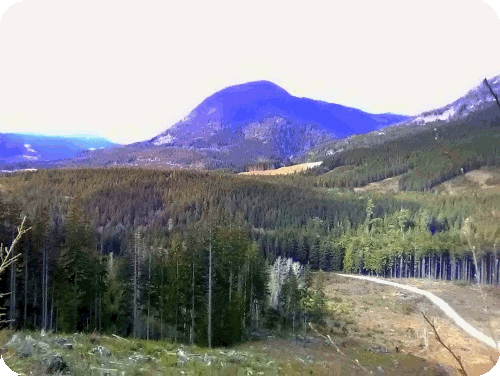
I’ve spent 10 years signing petitions, writing letters,
going to protests and making phone calls. I haven't seen
a lot of positive changes. I don't think it's possible
to address the deep social and environmental issues of
the world while locked into a capitalistic power system.
Capitalism operates on the premise of endless supply and
infinite expansion. 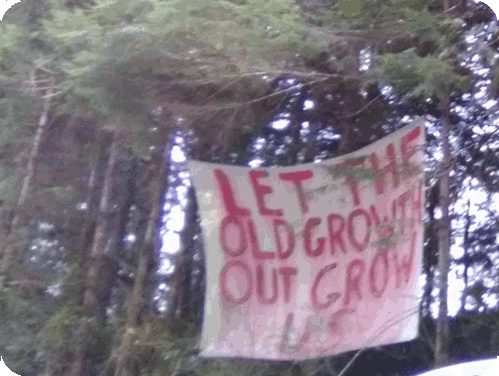
There’s a long standing legacy of direct action on
Vancouver Island; the most famous being in the Summer
of 1993 at Clayoqout Sound, north of Tofino, where
thousands of people gathered to protest extensive
plans for clearcut logging. I was in Nelson at the
time in my early teens and many of my friends made the
trip down to the coast with their parents to
participate in the protests. They returned with tales
of mass arrests, confrontations with logging
enthusiasts and hang-outs in the groves smoking weed
and cigarettes. 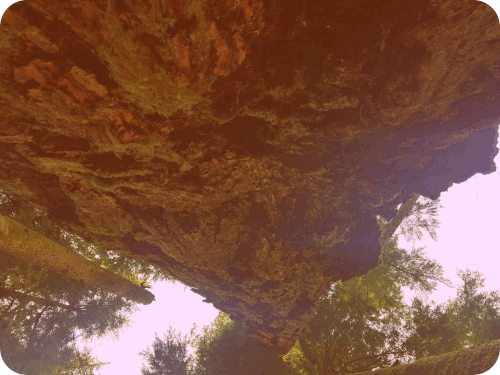
There was a another large protest in the Summer of
1991 known as The
Road Stops Here, that resulted in the
creation of the Carmanah Walbran National Park, near
Port Renfrew. 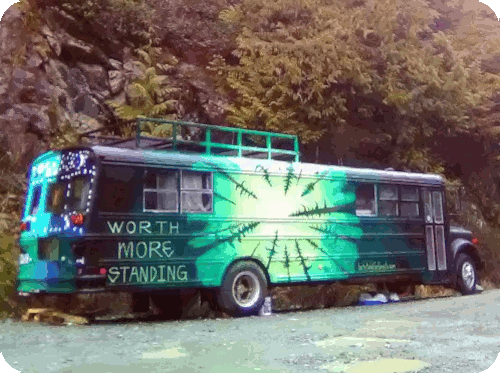
The Fairy Creek blockade was first erected in
early August after a 17 year-old filmmaker from
Washington state, who was remotely monitoring
logging activities in real-time using a digital
mapping system, noticed that roads were being
built into the isolated area. After being
notified, dozens of activists showed up and
blocked the road with a giant slab of wood cut
from an old growth stump. The blockade has been in
place for almost 9 months now, and further camps
and watch stations have been set up in 4 other
areas in between Cowichan Lake and Port Renfrew. 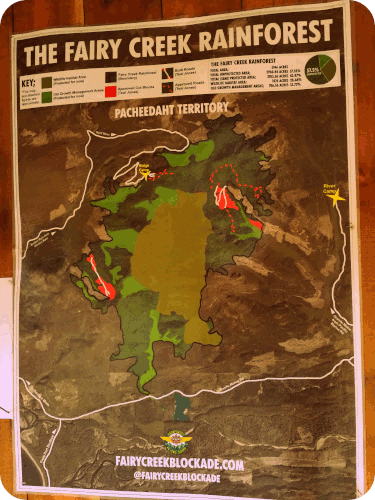
The Rainforest Flying Squad describes itself as
a “grassroots, nonviolent, direct-action
campaign to protect endangered, old growth,
temperate rain forests.” 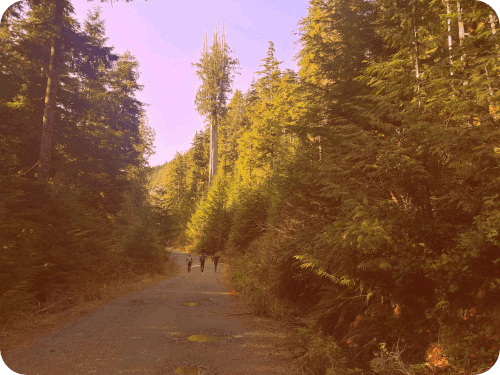
Even though I feel strongly about the need for
humans to collectively become more responsible
in our relationship with the land and its
resources, I don’t personally judge anyone for
the jobs that they hold. Nearly all of my
family is employed in some kind of resource
extraction. I was born in a town built around
a smeltering plant. My step-dad runs a small
mill on Vancouver Island.
**Download an AdBlocker for ad-free YouTube
enjoyment** 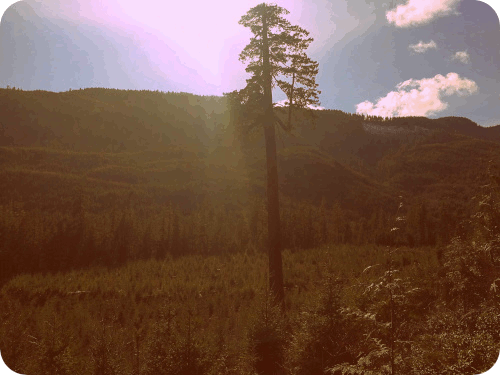
A court injunction is a legal document
that prevents individuals or groups from
doing a particular thing, like say
blocking a road or chaining oneself to a
piece of machinery. It’s often used by
corporations to remove protesters from a
blockade. In rare circumstances, First
Nations have been granted injunctions to
protect areas of land. In very rare
circumstances, an injunction will be
denied, as in the case of the Cathedral
Grove protests, near Port Alberni, in
2004. 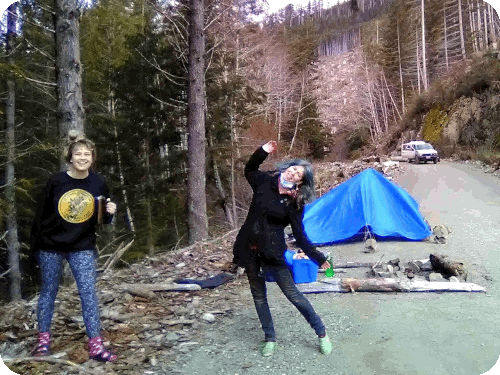
I was a bit nervous to go to the front
lines alone. I was dropped off with all
of my gear, the weather forecast was for
rain and snow, and no-one knew when the
police would be arriving to start
arresting people. I ended up in a pod
with a few other people who had also
traveled alone and they were awesome! It
was interesting how they had all found
out and become compelled to join in: one
guy saw a big protest in Victoria roll
by and wanted to learn more, another
person heard about it on TicTok and
another through Chek News. 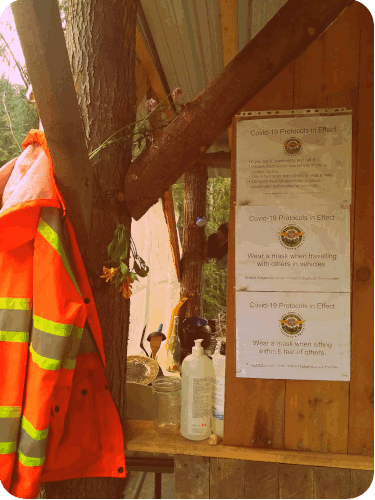
I attended a workshop for those who
were willing to be arrested. Several
dozens of people gathered in circles
in a large gravel pit while the sun
melted into the horizon. A man
sporting black canvas pants, a black
turtleneck sweater, black toque, black
sunglasses and a grey bandana covering
his face gave us detailed information
on the support networks and strategies
around the planned arrests. We were
given information on decentralized
leadership and were encouraged to form
affinity groups. We were told that we
should only carry our photo ID on us
and leave everything else with our
arrestee support person. 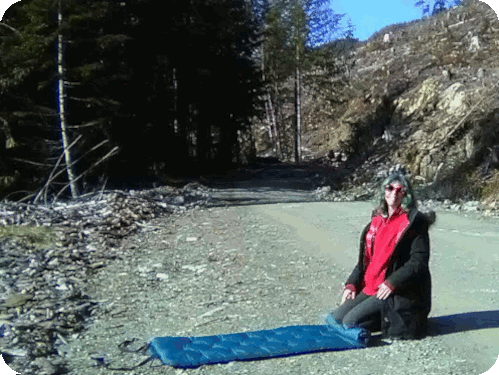
I’ve had many issues over the years
with internal dynamics on the
frontlines. Curmudgeonly individuals
with big egos and a lot to prove can
make it challenging to be involved.
I also have a hard time being around
chronic marijuana consumption. I
often take time away from activism
when my empathy bank fritzes out and
wait until I can see the big picture
again and can focus on the things
that matter, like making the world a
better place and connecting with
amazing like-minded people. 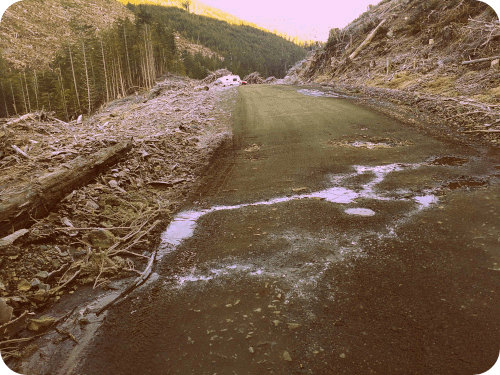
ecocide = suicide 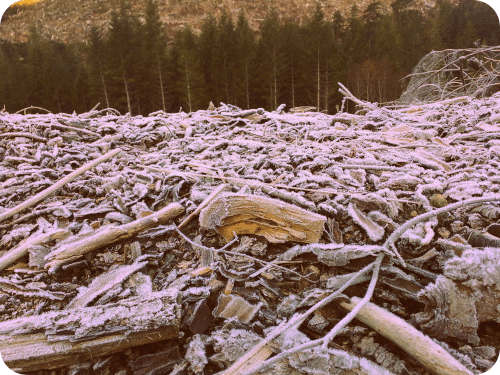
I left the camp to stock up on
supplies and came back the
following week with a van I
purchased off of Craigslist for
$500. After the second night, I
woke up to a misty morning just
above the 5km mark on the main
blockade road. The doors to the
van were iced shut, the
windshield was a skating rink
and there were patches of snow
on the highest tips of the
mountain ranges flanking the
winding road. I turned the van
on long enough to unthaw the
doors. I threw on my gumboots
and a thick winter jacket and
hiked up to a small trail
leading down to the Renfrew
Creek. I followed the blue
markers into a dense grove of
towering moss-covered trees and
then hiked along the rocky river
bed until I found a spot where
the sun was trickling in. In
seeing the trees, breathing the
dewy air and listening to the
river wind it’s way down to the
inlet, I reminded myself why I
was there. A little song bird
fluttered in and out of the
rushing water. 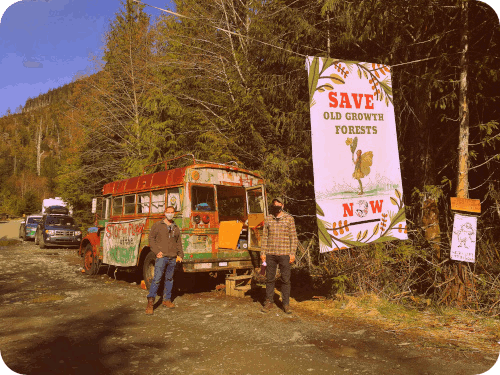
I got an invite to go to Eden
Grove. I travelled in the back
of the truck to keep social
distancing and felt like I was
back in the Kootenays in the
80’s. 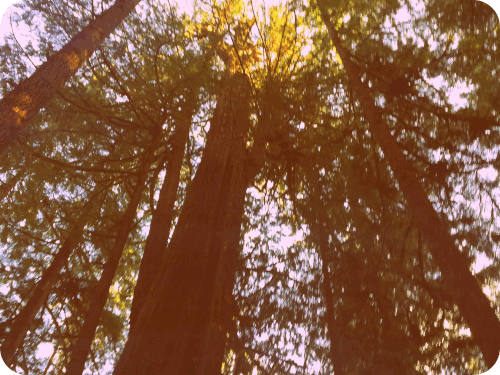
As a person of European
descent, it’s prickly
putting myself on the front
lines in a scenario where a
First Nations Band Council
has made the decision to
partner up with industry.
Many First Nations and other
remote communities are
financially dependent on the
logging of old growth and
other environmentally
destructive industries.
Great talk by Grand
Chief Stewart Phillip:
We are still living in
the shadow of the
policies of the Harper
government 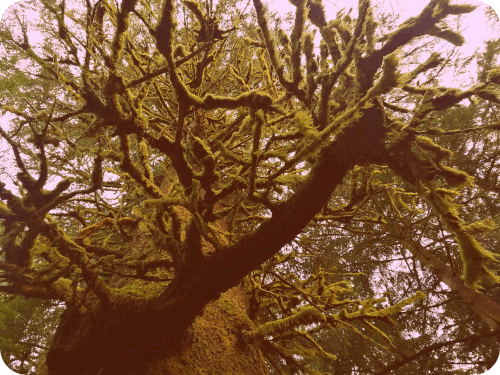
Most First Nations
communities in British
Columbia have two
systems of law. One is
orchestrated by the
elected Band Council
members, and the other
is orchestrated by the
hereditary leaders of
the nation (sometimes
there is overlap and
sometimes there are
multiple hereditary
leaders). 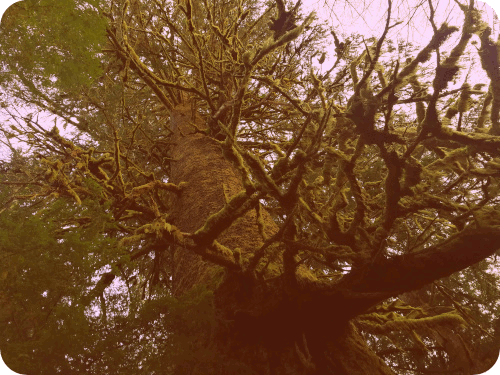
For many years, I
thought of my
ancestors as hard
working, salt of the
earth pioneers who
escaped difficult
circumstances in the
Old World and carved
their new lives into
rugged, uninhabited
lands. Even when
reading books or
watching TV shows
about the
experiences and
perspectives of
Indigenous people, I
wasn’t able to
reflect upon how
that applied to my
own existence. 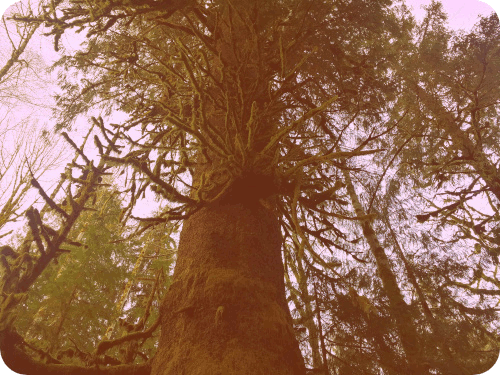
British Columbia
wasn't colonized
until the
mid-1800's and
most of the land
here is considered
unceded, which
means it was never
officially
absorbed into the
Commonwealth by
any kind of treaty
or official
agreement with the
Crown. What we
think of as crown
lands are actually
unceded First
Nations
territories. What
we think of as
private lands are
also technically
unceded. Even
where treaties
were signed, most
of them were not
properly honoured.
There is a long
legacy of lies and
broken promises
when it comes to
the government's
interactions with
Indigenous people
in Canada. Indigenous
world map:
Pre-christian
map of Europe:
I left the
camp again and
while I was
back home, on
April 13, a public
announcement
was made by
the Pacheedaht
Band Council
asking the
protesters to
leave. My
initial
reaction was
to no longer
be involved in
any capacity.
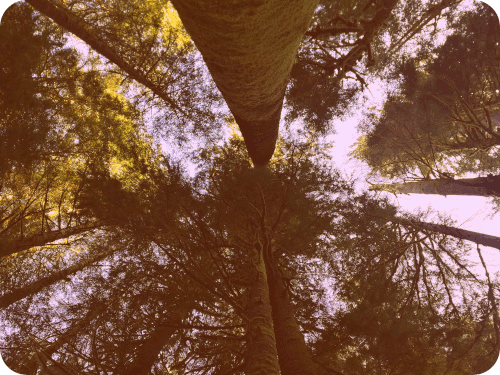
This
talk
between two
young First
Nations women
with ancestral
ties to
Pacheedaht is
great. 
To be
continued... If you'd like to learn more about the campaign and the Rainforest Flying Squad or help out in some way, click here * This piece also appears on Luke Hauser's Direct Action website. Download his free Ebook to read about the Anti-Nuclear movement in Berkley in the 80's and 90's. It's an amazing resource to learn about non-violent direct action and consensus and has some reprints of informative zines. |
|
Widget
is loading comments...
|

